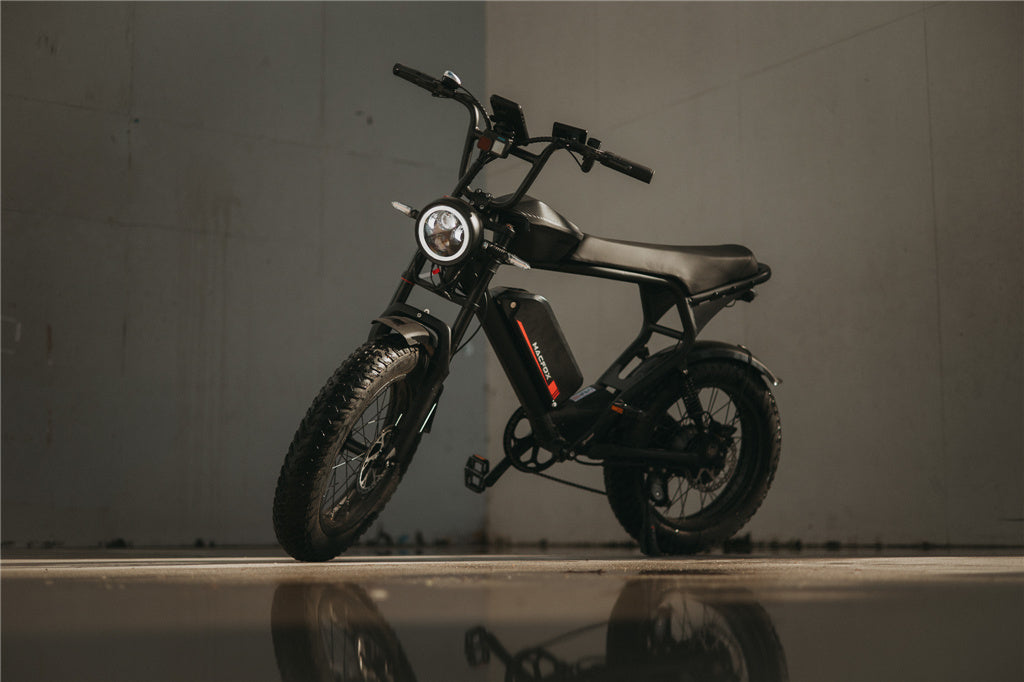Have you been considering purchasing an electric bike, or are simply curious about all the talk surrounding e-bike voltages such as 36v, 48v and 52v? Well look no further! Navigating through the electrifying world of e-bikes requires understanding their voltage system in order to unlock a higher level of riding proficiency. But why does voltage matter, and how will it impact your ride? Stay with me as we take an in-depth dive into understanding your electric bike's voltage - whether you're new or experienced e-biker this guide promises enlightened insight on all things related to voltages as well as help deciding which best matches up with your biking mojo.
What Does Voltage Mean on an Electric Bike?

Voltage refers to the measure of electrical potential powering an electric bike's motor. Consider voltage as the force pushing electrical energy through its system like water pressure does; in an e-bike this electrical force drives its motor and propels you forward.
Just as higher water pressure results in more powerful streams, increased voltage on an e-bike means more power can be delivered to its motor - this directly influences acceleration, climbing ability and top speed of your ride.
Voltage is only part of the equation; motor design and battery capacity (measured in ampere-hours, Ah) also play a vital role. These factors together will ultimately decide an e-bike's efficiency, performance, and range; for instance, one with high voltage may deliver additional power to its motor, making it easier to tackle steep hills or accelerate quickly; but without matching motor and capacity restrictions this benefit won't fully manifest.
How Much Voltage Do Electric Bikes Have?
Electric bikes typically come in three voltage levels - 36v, 48v and 52v systems. Each voltage level offers its own distinct combination of power, speed and range that suits different riding styles and needs.
-
36v Electric Bikes
36v e-bikes are the go-to choice for casual or entry-level riders, offering sufficient power for flat to moderately hilly terrain while still offering longer battery life. Perfect for daily commutes or leisurely park rides alike, 36v e-bikes provide a smooth and manageable riding experience that provides optimal enjoyment.
-
48V Electric Bikes
Step up your game with a 48v electric bike, providing extra power for more challenging terrain and higher speeds, giving riders extra excitement and power without having to settle into high-end territory. For example, the X1 cheap electric bike launched by Macfox is equipped with a 48V 10.5Ah battery. Riders of these electric bikes will experience higher acceleration and the ability to cope with steep hills more effectively.
-
52v Electric Bikes
At the highest voltage level, 52v e-bikes are the ultimate ride for thrill-seekers and long-distance adventurers. Boasting one of the highest power outputs in their category, these bikes excel both in speed and performance - whether off-roading or long distance touring, 52v bikes deliver faster and with more power compared to their counterparts making them popular among high performance enthusiasts.
Related Reading: Common Mistakes Beginners Make on Electric Bikes
Electric Bike Battery Voltage Chart
Understanding electric bike battery voltages is made simpler with a chart that visually compares 36v, 48v and 52v systems. While an inclusive chart would include specific models as well as their performances, here's an easily understandable overview:
| Voltage | Ideal For | Pros | Cons |
|---|---|---|---|
| 36v | Casual riding, commuting |
- Balanced power for everyday use - Longer battery life - Suitable for moderate terrains |
- May struggle with steep hills - Lower top speed |
| 48v | More demanding commutes, hill climbing |
- Higher top speed - Better hill climbing - Good balance of power and range |
- Slightly heavier than 36v - Can be more expensive |
| 52v | Performance riding, off-road adventures |
- Maximum power and speed - Excellent for steep inclines - Ideal for long distances with ample power |
- Shorter battery life if not managed - Higher cost - May be heavier |
This chart provides an overall comparison to help riders understand what to expect from each voltage level, but keep in mind that performance may depend on other factors like motor efficiency, bike weight and rider habits.
What Size Battery Is Best for Electric Bikes?
Selecting an electric bike battery size depends on several variables, including your typical ride length, terrain you will be traversing and your riding style. Watt-hour (Wh) ratings provide a more accurate snapshot of how much energy can be stored and utilized over time by an e-bike battery; higher Wh ratings translate to larger energy reserves and longer range.
Here's a basic guideline on how to choose an appropriate battery size for your e-bike:
-
Casual Commuter: For casual commutes of less than 20 miles and without steep inclines, smaller batteries (300Wh to 400Wh) might suffice; typically found on 36v e-bikes this size offers an optimal combination of weight and range suitable for urban commuting.
-
Longer Commuting and Hill Climbing: For rides over 20 miles or requiring frequent hill climbing, or that require more energy than you're used to recharging often (e.g. 400Wh to 600Wh batteries are common on 48v e-bikes) then considering a medium-sized battery is recommended; these provide enough reserve power to endure longer distances or challenging terrain without the need for frequent recharge.
-
For High Performance and Extended Tours: When embarking on high-speed riding, off-road adventures or long distance touring trips, a battery with 600Wh capacity or greater may be essential to ensure maximum power and endurance for covering significant distances without running out of juice midway through your tour. 52v systems often provide this power supply so as to meet this goal effectively.
Consideration should not only include battery size and quality but also overall system efficiency and how well an e-bike operates as an integrated unit. A high-quality battery from a reputable manufacturer will offer better longevity and more reliable performance despite having the same Wh rating; in addition, an efficient motor and effective riding practices can significantly extend range regardless of battery size.

What Is the Ideal Electric Bike Voltage?
Selecting an ideal electric bike voltage depends on personal preferences and intended use. For casual riders and commuters, a 36v e-bike may suffice, while riders who desire additional power and versatility might opt for 48v models; those seeking maximum performance and range should opt for 52v models instead.
Understanding your electric bike's voltage is integral to meeting your riding expectations with an appropriate bike. From city streets to rugged trails, there's sure to be an electric bike voltage just right for you - embrace this electrifying world and have fun on your ride!
FAQs
Is using a higher voltage battery compatible with my electric bike for improved performance possible?
Yes, using a higher voltage battery can significantly enhance performance by providing faster acceleration and enhanced hill climbing capability. Just make sure your motor and controller can handle the increased voltage to avoid damage to their components.
How can I choose between 36V, 48V and 52V electric bikes?
Select your battery voltage depending on your riding needs: 36v for casual commuters on moderate terrains and casual hill climbing, 48v for longer distances and hill climbing, and 52v for high performance riding and off-road adventures.
Which battery size is optimal for daily commuting?
A battery size between 300Wh and 400Wh should provide adequate range and weight balance on urban rides under 20 miles in distance, typically.


















